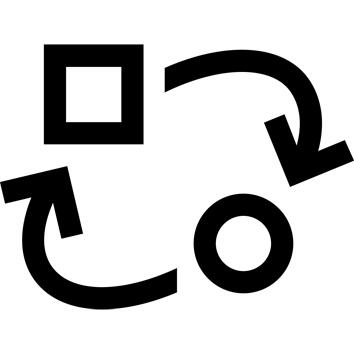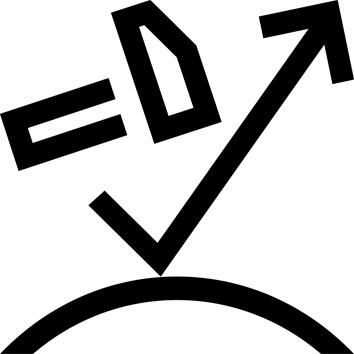The weight of your cue
Your American billiard cue weighs 570 g (20 oz).
We cannot guarantee the exact weight of your cue. A tolerance of 10% must be allowed, since wood density can vary, even within the same wood species, depending on the forest exploited, its exposure to the sun or the section of the tree used (bole, crown, top).
The size of your tail
The BC 500 US cue measures 145 cm (57 inches): the most common size of billiard cue. Its size will enable you to adopt the right posture for your shots.
For balls further away, you can add an extension to the end of the cue shaft and gain 10 cm. This will take your cue from 145 cm to 155 cm in a matter of seconds.
The balance of your cue
Your cue has a balance of 43 cm, which means that the balance point is 43 cm from the end of the shaft.
If you're using an open bridge, the balance point must be in front of the gripping hand, otherwise the cue will "lift" off the top of your hand.
The balance point is generally of little consequence, apart from personal preference.
A barycenter further back will make your cue feel heavier; if it's further forward, your cue will feel lighter.
Why can't we guarantee the straightness of our cues?
All our cues are manufactured. Their straightness is checked individually, piece by piece, as they leave the factory. However, during transport and storage, billiard cues are subject to variations in temperature and humidity, which can alter their straightness over time.
This stability problem applies to all billiard cues on the market made from wood (maple, ash, poplar, ramin).
Why maple?
Maple is a particularly strong and resistant wood that is easy to machine. It can therefore be used to manufacture tapered arrows for French and American billiard cues.
Historically, American billiard cues were made from maple, because it was (and still is) a widespread wood species in North America (Canada). This choice (accessibility of raw material) in the manufacture of billiard cues has been preserved and has spread to French billiards.
Physical properties and technical data of maple
Maple, with a density of 0.64 and a Monnin hardness of 4.7, is classified as a medium-hard wood.
This species has a compressive strength of 55 MPa and a static bending strength of 100 MPa. Its longitudinal modulus of elasticity is 13,000 MPa. These are average measurements, which can be consulted, for example, on the CIRAD reference site.
Maple is a strong, resistant wood whose characteristics make it ideally suited to the manufacture of billiard cues.
How to preserve your cue?
We advise you to keep your wooden cue away from humidity and temperature changes.
After each game, don't leave your cue leaning against a wall, as this could deform it. It's best to store it flat in a storage bag or case. Alternatively, keep your cue as upright as possible, using a cue rack for example: this will keep it straight and prevent warping.
Did you know? The process of your cue can be maintained.
If your cue tip comes loose, don't worry, it can happen! Shocks with the cue ball wear out the tip.
You'll need to change the cue tip, and to do so, nothing could be simpler:
1/ Remove the damaged cue tip
2/ Sand the new one with sandpaper
3/ Glue on the new tip
4/ Work on the new cue tip
Why a tail cut in half?
For easier transportation, your cue can be unscrewed in 2 parts at mid-length.
The steel/reinforced joint provides quality clamping and eliminates the impression of a 2-part cue when playing.
And with its quick screw thread, you can assemble and disassemble your cue in just 4 turns.
What's the purpose of the bumper at the end of the tail?
The bumper is the rubber part under your billiard cue. When you're playing or waiting between shots, you'll probably put your cue on the floor. With the bumper: no risk of damaging your cue or simply your floor.
Team tip: how to position yourself correctly at billiards?
Make sure you're at a safe distance from the billiard table. Place your right foot under your right hand (if you're right-handed). Keep your feet apart and steady. Finally, make sure your arm is vertical when holding the cue. If your hand is too close, you'll have trouble activating the cue stroke.
What is billiards?
American billiards is distinguished from its cousins by its fairly large table (9 ft), wide pockets (holes) and large balls (approx. 57.5 mm) numbered and colored.
In American billiards, there are 4 main modes of play: 8-ball, 9-ball, 10-ball and 14/1 continuous.
American billiards is known as a game of attack and risk-taking.





